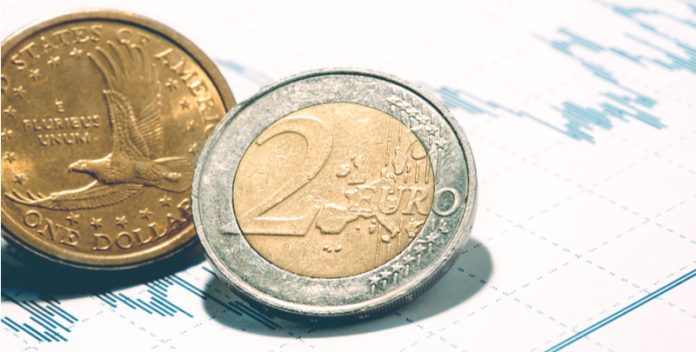Confidence in the euro surged throughout the course of last week as it charged 2% higher versus the U.S. dollar. Euro traders once again found themselves getting carried away on interest rate hike expectations, whilst the U.S. Federal Reserve could be about to dampen expectations of its own rate hike.
Heading into the new week the euro was managing to keep its head above $1.14. This is the strongest level for the euro versus the dollar in over a year.
| What do these figures mean? |
|---|
|
When measuring the value of a pair of currencies, one set equals 1 unit and the other shows the current equivalent. As the market moves, the amount will vary from minute to minute. For example, it could be written: 1 EUR = 1.12829 USD Here, €1 is equivalent to approximately $1.13. This specifically measures the euro’s worth against the dollar. If the U.S. dollar amount increases in this pairing, it’s positive for the euro. Or, if you were looking at it the other way around: 1 USD = 0.88789 EUR In this example, $1 is equivalent to approximately €0.89. This measures the U.S. dollar’s worth versus the euro. If the euro number gets larger, it’s good news for the dollar. |
Friday saw investor attention focused on inflation figures for both the U.S. and the eurozone. The eurozone reported a slight rise in inflation, year on year, as measured by the core price index. Prior to that, it had suffered with very low inflation despite a recent uptick in economic activity.
Friday’s figures brought positive news as inflation beat expectations at 1.2%. It’s still some way from the European Central Bank target level of 2% but an improvement on last month’s 1%.
Inflation figures are important because a central bank will want to see inflation rising and relatively close to its target inflation level before increasing interest rates. Increasing interest rates discourage consumers to spend, as they either put more money towards debt repayments (interest), or are tempted to put money into savings accounts which also have higher interest rates.
US inflation moves lower
This U.S. dollar inflation data came in the form of the Personal Consumption Expenditure index, the Fed’s preferred measure of inflation. The reading showed that underlying inflation dropped by 0.1% which could well contribute to a Federal Reserve which is less likely to hike rates one more time before the end of 2017.
The increasing desire of other central banks to raise rates is exposing some growing reservations at the Federal Reserve, even if not from the top, which is weighing on the buck.
Eyes towards the first of the week’s pmi’s
Looking out across the week, economic condition surveys in the form of PMI’s are in focus. Today sees the release of the manufacturing print for both the U.S. and the eurozone. Whilst any figure above 50 is representative of growth, a figure below 50 is indicative of contraction. The eurozone is looking to reach or beat 57 on the gauge, whilst the U.S. is aiming for 55. A PMI reading above expectations could boost the relevant currency, particularly given the high percentage that manufacturing contributes to each region’s GDP.
| Why does strong economic data boost a country’s currency? |
|---|
| Solid economic indicators point to a strong economy. Strong economies have strong currencies because institutions look to invest in countries where growth prospects are high. These institutions require local currency to invest in the country, thus increasing demand and pushing up the money’s worth. So, when a country or region has good economic news, the value of the currency tends to rise. |
|
This article was initially published on TransferWise.com from the same author. The content at Currency Live is the sole opinion of the authors and in no way reflects the views of TransferWise Inc. |





